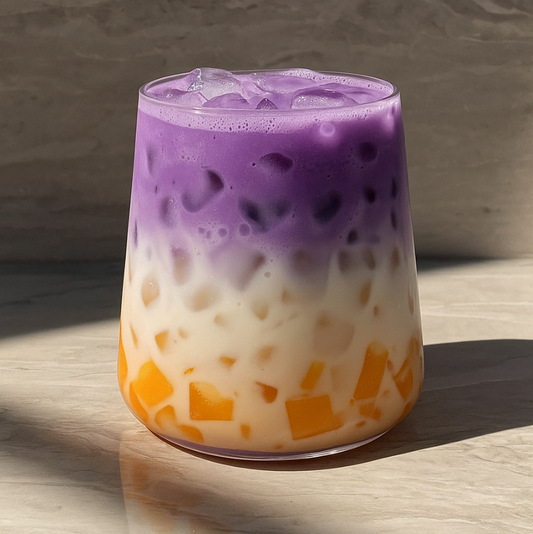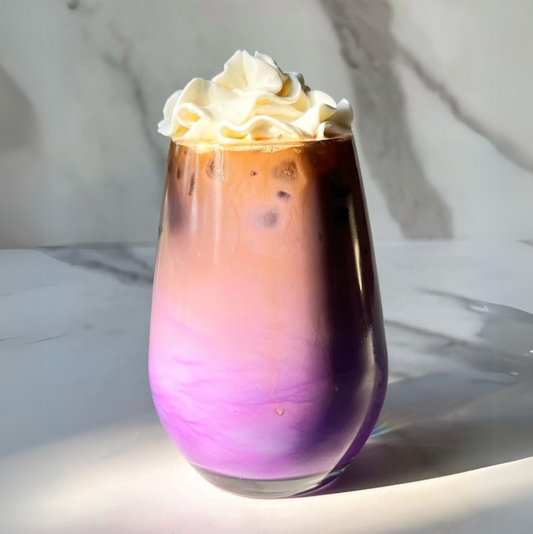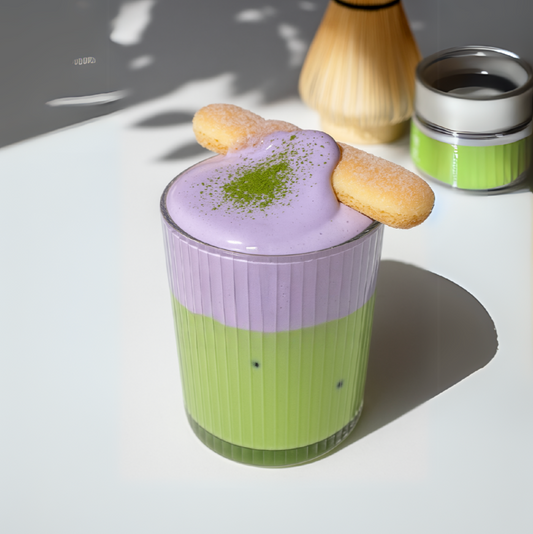Origin of Ube: the Philippines’ purple yam — varieties, cultivation and how to cook it
Ube—the iconic purple yam (Dioscorea alata)—is a Southeast Asian tuber with a sweet, nutty flavor. Born in the tropical islands of the Philippines and long cultivated in Austronesian gardens, it spread across archipelagos to India, Oceania and West Africa. Its naturally sweet flesh, gentle vanilla-like aroma and vibrant purple hue—rich in antioxidants—turned a traditional food into a modern star for desserts, drinks and savory dishes.
You may also like: Purple yam: origin, benefits & uses

Ancient roots: where and how ube is grown
In Luzon and the Visayas, ube has been cultivated for millennia. Vines climb trellises and form elongated tubers harvested at maturity. Light, well-drained, slightly acidic soils are best; farmers rotate crops with cabbage, carrots and other vegetables to protect soil nutrients. This heritage created many local varieties, from pale violet to deep purple, more or less sweet.
Historically, ube was food security: boiled or steamed, sliced and dried, then ground into ube powder and packed in sachets for trade between islands—how purple yam crossed borders via Chinese and Indian merchants.
Ube vs sweet potato and potato
All are edible tubers but from different families. Ube (Dioscorea) is starchier and firmer with delicate vanilla notes; sweet potato (Ipomoea) is more fibrous and very sweet; potato (Solanum) is neutral and ideal for fries, gratin and mash. Ube shines in cakes, creams and velvety desserts, yet also in savory curries simmered in coconut milk.
Nutrition: vitamins, minerals & antioxidants
Ube stands out for anthocyanins (purple antioxidants), potassium and vitamin C. It supplies fiber and complex carbs for steady energy; vivid-flesh varieties add carotene and vitamin A. A balanced nutrient profile for sweet or savory cooking.
- Potassium for fluid balance and blood pressure.
- Vitamins C & A for immunity and antioxidant action.
- Fiber for satiety and digestion.
- Complex carbs for gentle, lasting energy.
Traditional preparations
The icon is ube halaya: a silky jam cooked in a saucepan with coconut milk or yogurt, a touch of syrup and vanilla. Spoon into cakes, pastries and crepes, churn into ice cream or purple mousse. Savory? Toss ube cubes into ginataan curries with onion, garlic, ginger, coriander and pepper. Bake fries, chips or a gratin for quick sides; blend into lattes, smoothies and milkshakes with coconut milk.
Home prep in 4 steps
- Peel thick skin (gloves if sensitive).
- Cook in salted water, steam or roast 25–40 min.
- Blend for puree or keep as cubes.
- Season savory (onion, garlic, ginger) or sweet (vanilla, syrup).
Shortcut: rehydrate ube powder in hot water or milk and stir into your preparations.
Cultural origins & modern appeal
In Filipino culture ube signals togetherness—served at weddings and holidays, folded into pandesal, candies and cakes. The diaspora carried it to global cafés and bakeries. Today it also colors simple dishes—vegetable curries, light gratin, oven fries.
Health snapshot
With potassium, vitamin C, vitamin A, fiber and antioxidants, ube is a tasty way to vary starches. Try it in soups, puree, cake batters or lighter pastries.
Why ube still fascinates
It bridges heritage farming with creative cooking. The origin of ube tells of family preparations simmered in a saucepan, market sachets of powder for Sunday cake, and curries where cubes of yam meet onions, coriander and ginger—proof a humble tuber can be delicious and nutritious.
Get it now to make delicious recipes: lattes, cakes, bread…












